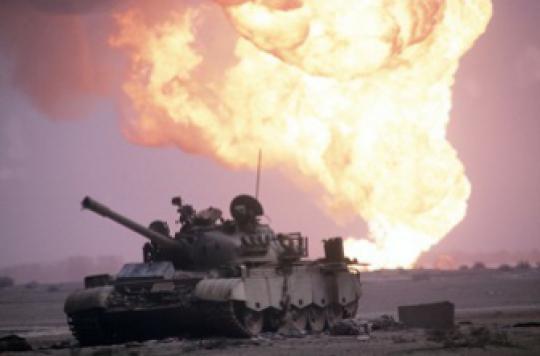Psychiatric disorders are often cited as a consequence of the Gulf War. Gulf War syndrome is much more common and is believed to be due to chemical exposure.

Migraines, memory problems, breathing difficulties… Here are some symptoms of Gulf War syndrome. It would be due to chemical exposure, according to a report presented April 28 to the US Minister of Veterans Affairs. The Advisory Committee on Research into the Diseases of Gulf War Veterans (RAC) details the latest developments concerning this syndrome, which affects 25 to 30% of soldiers who fought in 1990-91.
The nervous system is affected
Gulf War syndrome is the number one disease observed in veterans. Far ahead of post-traumatic stress disorder (PTSD) and other psychiatric disorders. Since 2008, all studies have supported the theory of chemical exposure, “on the combat zones”, which would have caused the Gulf War syndrome. For a while, the psychological thesis was advanced, to be quickly swept aside. Studies also show an alteration “of the central and autonomic nervous systems, neuroendocrine functions and the immune system”, underlines the report. Experts point out in particular two gases widely used during the conflict: sarin and cyclosarin gases, the devastating effects of which are known, in particular on cognition.
In search of treatments
Few treatments are available today for these veterans, whose suffering is very real. On the medical side, defining a way to soothe these pains is the sinews of war. “The first results provide encouraging signs. The treatment goals set in 2010 are achievable, ”says Roberta White, Scientific Director of RAC. The Committee’s experts point out a number of promising studies which alleviate various disorders (sleep apnea, cognitive loss, fatigue, etc.). Among them, some are evaluating the effectiveness of simple treatments: intranasal insulin, continuous positive pressure ventilation (CPAP) or even coenzyme Q10 (ubiquinol).
The Committee now calls for the development of studies on animal models to test these leads. “Although the perfect animal model for Gulf War syndrome has not yet been developed, preclinical animal models should be used to develop and test new treatments, targeting the pathobiological mechanisms of the disease and the consequences of disease. an exhibition [chimique] on combat zones ”, recommends the RAC at the conclusion of its report.
Among the other collateral damage of the 2e Gulf War, there are neurological disorders, sleep disorders, reproduction … but also brain cancer. The soldiers exposed to nerve gases during the destruction of the weapons depots in Khamisiya (Iraq) are also those who die the most from brain cancer. The same goes for veterans exposed to contaminants from oil well fires during the conflict.
.

















